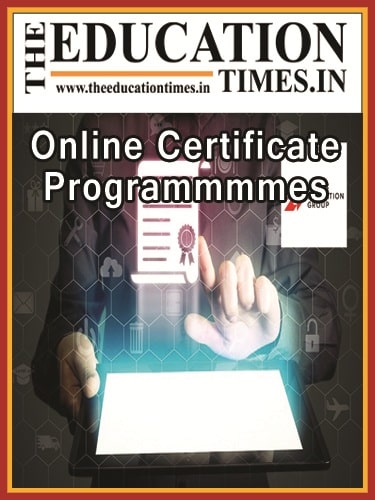Hongkong, September 19, 2020: We live in the age of the social influencer. Nowadays, with the development of the internet and the growth of social media, it is increasingly easy for consumers to post a comment or a picture of a product and to notice whether somebody else uses or praises a product or a brand, making word of mouth and opinion leader recommendations more important than ever.
Online, a recommendation may come in a form of a selfie on Instagram, a short Tweet, a “like” on Facebook, or the fact that an opinion leader uses certain products. An entire cottage industry has seemingly risen overnight where internet celebrities — people who acquired or developed their fame online — make their entire livings from corporate endorsement, using their relative notability to peddle products or experiences to their followers.
However, using social influencers to market a company’s products or services can be tricky. Consumers nowadays are savvy enough when they encounter a product endorsement to consider not only that it is likely sponsored, but also whether the recommendation is purely based on high product quality. It is highly likely they would also think about whether it was because the social influencer selected a specific product (from a variety of offerings) that suited their particular taste, says Chenxi Liao, Assistant Professor at The Chinese University of Hong Kong (CUHK) Business School‘s Department of Marketing.
Under such a scenario, is there an ideal number of varieties of a product a company could offer to maximise profits? This is what drove a group of researchers to look at the impact of product variety when consumers rely on the product evaluations of opinion leaders or experts to make purchase decisions. Entitled Opinion Leaders and Product Variety, the study was conducted by Prof. Liao in collaboration with Prof. Dmitri Kuksov of the University of Texas at Dallas.
“Absent costs of variety, to increase profit, an intuitive solution is to increase product variety. With more alternatives available, it is more likely that an expert can find a variant that fits their personal preference, and post a positive product opinion,” says Prof. Liao, adding that since consumers expect quality to be higher when the expert opinion is positive than when it is negative, they are willing to pay a higher price.
When More Variety is Bad
From this perspective, increased assortment can benefit the firm. However, when many product variants are available, consumers may expect an expert to find a better fit, and this consideration would then reduce consumer expectations of the product quality, leading to lower profits.
There is also the issue of market noise. Consider that opinion leaders are likely to be more knowledgeable and have a greater desire to educate themselves about a certain product, since this is typically how they gain popularity and the trust of their followers in the first place. These experts are likely to be able to better understand and choose which variant fits them best.
On the other hand, the everyday consumer may not be as familiar with the product or are not willing to spend the time and effort. This means they may not be able to choose the best-fitting alternative and may benefit less from having many alternatives.
Taken all of this into consideration, the researchers formulated a complex mathematical model and found that there does exist a point beyond which increasing product variety netted no significant benefits to a company.
Prof. Liao explains that two opposing forces come into play when a company increases the variety. First of all, when product variety increases, it raises the probability of getting a positive expert opinion and therefore the product being recognized by consumers as of high quality. On the other hand, it also decreases certainty by the consumer that the product received a good review because of its inherent high quality.
Although the first effect is positive, the second is negative. It turns out that for a small number of variants, the first effect dominates the second, and for a large number of variants, the second effect dominates the first.
“We further find that the optimal number of product variants increases if the importance of fit for the expert or the expert’s unwillingness to provide a positive recommendation is higher,” Prof. Liao adds.
Another consideration is whether the company has a good grasp of how consumers would rate the quality of its products. The researchers cite as examples two similar products in recent years — the Apple iPod and the Microsoft Zune music players. Whereas the second flopped, the first became a phenomenal success, but because they were both conceptually new products, it was difficult to tell how consumers would rate their quality.
The research also found that, unsurprisingly, when the firm has a good understanding of how consumers will perceive the quality of its products, the firm with the lower quality product may seek to hide its inferiority by limiting the information transmitted through expert opinions and mimic the variety provided by a firm with a similar product but of a higher quality.
Real World Implications
Relating the findings to real world business practices, Prof. Liao notes that it is not uncommon for a company to introduce a product line with a small number of products, or even just one, promoted to opinion leaders.
“The idea is that the promotion of a smaller number of products makes communication easier and clearer,” she says, citing a successful promotional campaign by the U.S. luxury department store chain Lord & Taylor. In introducing its Design Laboratory collection, the company chose to promote a single dress to many influencers on Instagram.
The fact that a number of social influencers all agreed to create a post on Instagram with the same dress signaled to their followers that the choice was based on the quality of the dress itself, rather than because it complimented a specific fit or complexion.
Another prediction of the model is that when opinion leaders are more likely to be happy with the product regardless of the exact quality they see, a firm should prefer to offer a smaller product selection, says Prof. Liao. For example, Apple does not provide as many customisation opportunities in iOS for iPhones as Android systems usually do. However, since many opinion leaders like Apple products more, they are likely to give a positive review.
Prof. Liao adds that one important assumption was that consumers are unable to tell exactly how much of a positive product review is because the product is suited to the reviewer’s tastes. This is changing in that many websites, such as the American NGO Consumer Reports, are providing more detailed information regarding the reviewer’s context. In these circumstances, the negative effect of having a large number of product variants will be diminished.
Looking at opportunities for future research, Prof. Liao notes that another assumption is that the expert always posts a product evaluation. “In practice, opinion leaders could be silent on many products. An absence of a recommendation may be interpreted as a negative opinion, as in the expert did not find it worthwhile to choose the product, or could be reducing the informativeness of the recommendations,” she says.
One interesting avenue is to consider the uncertainties facing the expert before and after the purchase, and how it affects the likelihood of a positive review, she adds.
Corporate Comm India (CCI Newswire)






























